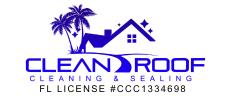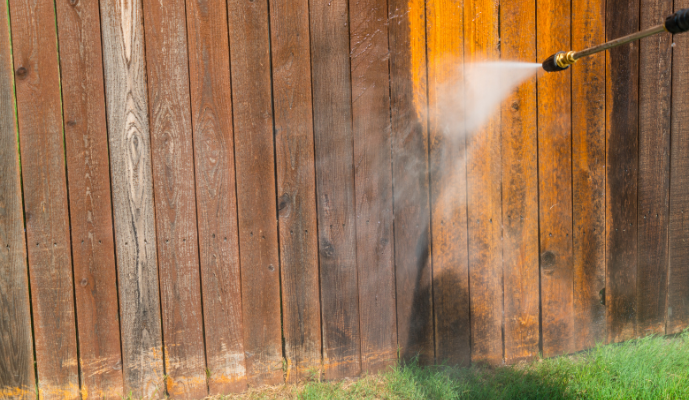Every home, no matter how well maintained, eventually collects grime, algae, mildew, or stains that affect both its beauty and durability. When the time comes to restore that fresh, clean look, most homeowners weigh two choices: soft washing and power washing. The decision is more important than it might first appear because choosing the wrong method can risk damaging surfaces or wasting money. Understanding the difference between soft washing and power washing ensures you preserve your home’s curb appeal while extending the longevity of siding, roofing, decks, and other exterior features.
What Is Soft Washing and How Does It Work?
Soft washing is a cleaning method that combines low pressure with detergents and environmentally friendly solutions to remove mold, algae, mildew, and dirt from exterior surfaces. Unlike power washing, which depends mostly on raw pressure, soft washing relies on chemistry to target and kill contaminants at their roots. This means the treatment lasts longer because the cause of the growth is destroyed, not just the surface stains.
Typically, soft washing uses water pressure under 500 PSI. A pump system delivers a mixture of water and detergent, sometimes including a carefully diluted bleach solution, which soaks into porous materials like wood, vinyl siding, or roof shingles. The detergent breaks down stains and kills bacteria, while the low-pressure rinse gently removes residue without damaging the paint, wood grain, or protective coatings.
Because of its gentle nature, soft washing is especially effective on delicate surfaces such as painted siding, stucco, and shingles. It is also safer for surfaces that might crack or erode under high-pressure streams.
What Is Power Washing and How Does It Differ?
Power washing, sometimes called pressure washing, uses water pressure between 1,300 and 4,000 PSI to blast away stubborn dirt, grease, paint, or other buildup. The key tool here is the nozzle, which can be adjusted to change the width and force of the spray. A narrow nozzle creates a concentrated jet powerful enough to strip paint or clean deep-set stains from concrete.
Unlike soft washing, power washing does not typically involve specialized detergents. Instead, the high-pressure water does most of the work. However, some technicians may combine degreasers or neutral pH cleaners to help with oil or rust removal. This method is highly effective on durable materials such as concrete driveways, brick patios, and metal surfaces that can withstand forceful cleaning.
While power washing is efficient at quickly removing visible stains, it does not kill organic growth at its roots. Algae and mold can return within months because the spores are not fully eradicated.
Comparing Soft Washing and Power Washing Side by Side
To decide which method is right for your home, consider how they differ in pressure, cleaning agents, and long-term effectiveness.
-
Pressure levels: Soft washing uses under 500 PSI, while power washing can exceed 3,000 PSI.
-
Cleaning approach: Soft washing relies on detergent to break down bacteria and algae, while power washing relies on water force.
-
Surface compatibility: Soft washing is best for siding, roofs, stucco, and wood decks. Power washing works better for driveways, brick, and concrete.
-
Longevity: Soft washing lasts longer because it kills growth at the source. Power washing offers quicker results but shorter protection.
-
Environmental impact: Soft washing uses less water but does involve detergents. Power washing consumes more water but fewer chemicals.
Which Surfaces Are Best for Soft Washing?
Soft washing is ideal for fragile or painted surfaces that could be damaged by high water pressure. Some examples include:
-
Vinyl siding and painted siding that needs to retain its finish
-
Roofs with asphalt shingles, tile, or wood shake
-
Stucco walls and delicate exterior finishes
-
Wooden decks and fences that are prone to cracking under pressure
-
Windows and frames that could break if exposed to direct power washing
These surfaces benefit from the benefits of soft washing because the detergents seep into pores and kill mold, algae, and bacteria at their source without stripping protective coatings.
Which Surfaces Are Best for Power Washing?
Power washing shines when you need to remove tough stains, oil spots, or years of dirt accumulation from durable materials. Common uses include:
-
Concrete driveways and sidewalks
-
Brick patios, retaining walls, and garden features
-
Metal railings and outdoor furniture
-
Hardwood decks that require paint stripping or refinishing prep
-
Large masonry surfaces where detergent soaking is less effective
If the surface can tolerate high water pressure and you want fast stain removal, power washing may be the better choice.
The Risks of Each Method
Both methods carry some risk if used incorrectly. With soft washing, improper chemical mixing can lead to paint discoloration or plant damage if the runoff is not controlled. With power washing, the risk is greater because water pressure can gouge wood, crack stucco, or loosen roof shingles if the nozzle is too close.
Because of these risks, many homeowners prefer hiring professionals who understand nozzle selection, pump calibration, and detergent balance. Professional power washing also provides insurance-backed protection in case of accidental damage.

Longevity and Maintenance Benefits
Soft washing generally provides results that last longer than power washing. Since algae and mold are killed at their root systems, regrowth is delayed for 12 to 24 months. In contrast, power washing often cleans only the surface, meaning growth can return within 6 to 12 months.
This difference can influence overall maintenance planning. A homeowner who wants to preserve paint, reduce frequent upkeep, and protect siding integrity may prefer soft washing. On the other hand, someone who needs immediate stain removal on a driveway before sealing might lean toward power washing.
Environmental Considerations
Environmental impact is an important part of the decision. Soft washing uses detergents, yet many are biodegradable and environmentally friendly when diluted properly. For example, non-ionic surfactants and hydrogen peroxide-based cleaners break down into harmless water and oxygen.
Power washing, while using fewer chemicals, consumes significantly more water. A large driveway may require hundreds of gallons, while a soft wash treatment on the same surface may use less than half that amount. Therefore, homeowners concerned about water conservation often view soft washing as the greener choice.
DIY vs Professional Exterior Cleaning
Both methods can be attempted by homeowners, but equipment and safety considerations vary. Soft washing requires a pump, garden hose connection, protective gear, and knowledge of detergent mixing. Using too much bleach or detergent can harm landscaping or discolor paint.
Power washing requires skill with a nozzle and awareness of risks such as paint removal, window breakage, or personal injury from kickback. The water force can be dangerous if mishandled.
For these reasons, many people hire professionals who bring experience, tools, and safety protocols. They also provide warranties and ensure runoff management to protect gardens and lawns.
Common Questions About Soft Washing vs Power Washing
Is soft washing safer than pressure washing for my house?
Yes, especially if your house has vinyl siding, stucco, or roof shingles. The low pressure combined with detergent ensures safety and effectiveness.
Will power washing damage my paint?
If not handled carefully, yes. High pressure can strip paint or weaken sealants. A professional knows the correct nozzle angle to minimize risk.
Which method uses more water?
Power washing generally consumes two to four times more water than soft washing.
Can I combine both methods?
Yes, some professionals use a hybrid approach. They might soft wash siding and roofs to kill organic growth, then power wash a driveway or deck for stain removal.
Choosing the Best Method for Your Home
The right choice depends on your home’s materials, the type of stains, and your long-term goals. If your concern is mold or algae on siding or roofing, soft washing is the safer and more effective choice. If you need to restore a driveway, patio, or brick wall, power washing offers fast results.
Many homeowners discover that using both methods strategically provides the best outcome. Soft washing protects delicate features and extends longevity, while power washing restores rugged surfaces.
Roof Cleaning Services by Florida Clean Roof
If your roof shows dark streaks, moss, or algae growth, professional care is essential. Florida Clean Roof specializes in roof cleaning services that combine the safety of soft wash roof treatments with proven detergents to protect shingles and extend the life of your roof. Their expert team understands the risks involved with improper pressure washing and ensures your roof shingles are cleaned without damage. From soft washing to complete maintenance, Florida Clean Roof delivers results that enhance curb appeal and safeguard your investment.

